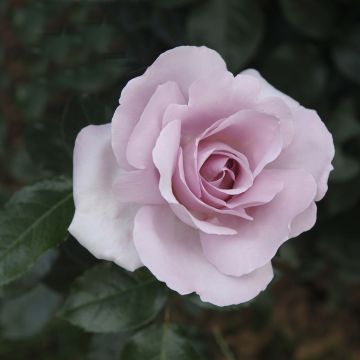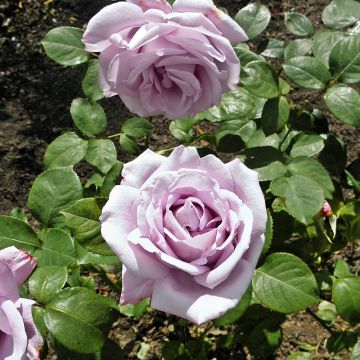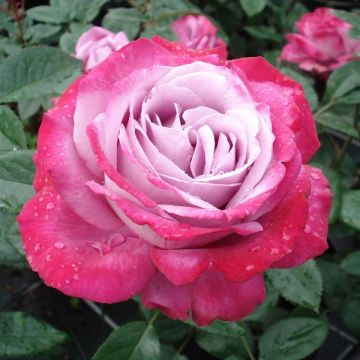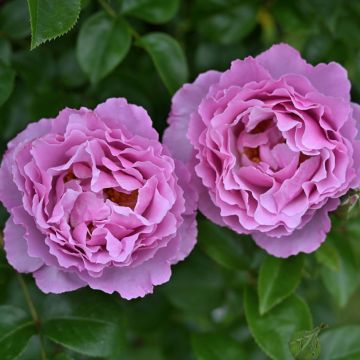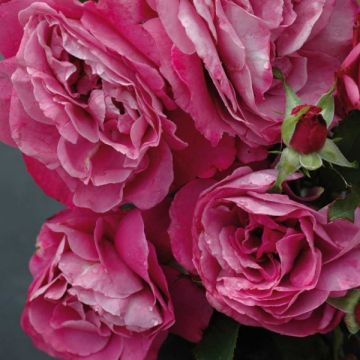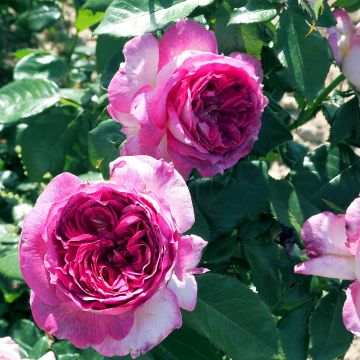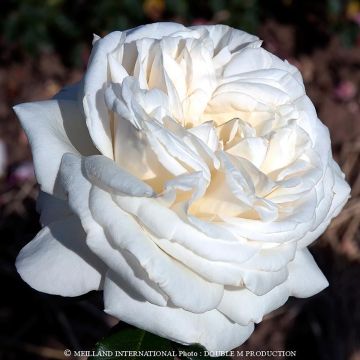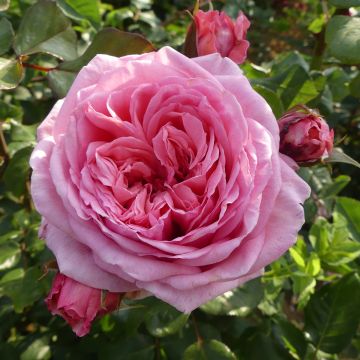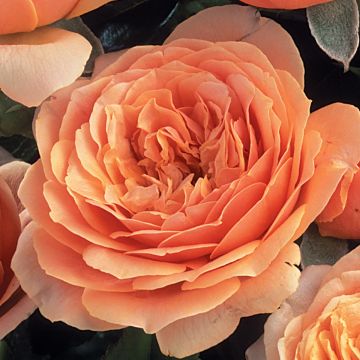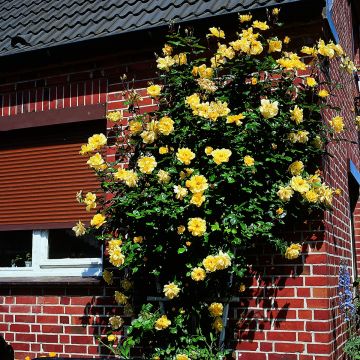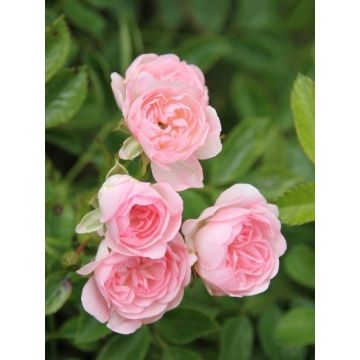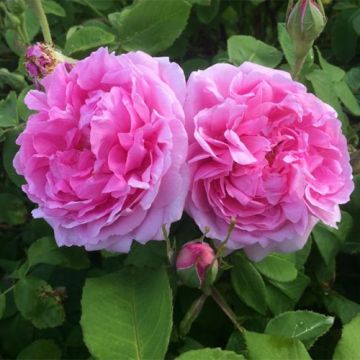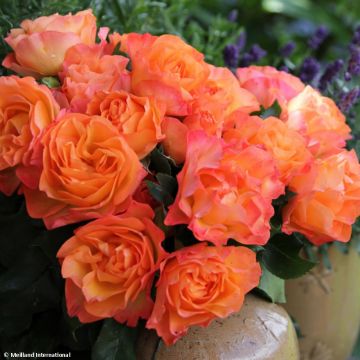

Rosier à grandes fleurs Sissi en racines nues
Rosa Sissi
Rosa Sissi ® Tannacht
Rose [Blue Moon]
Why not try an alternative variety in stock?
View all →This plant carries a 24 months recovery warranty
More information
We guarantee the quality of our plants for a full growing cycle, and will replace at our expense any plant that fails to recover under normal climatic and planting conditions.
From €5.90 for pickup delivery and €6.90 for home delivery
Express home delivery from €8.90.
From €5.90 for pickup delivery and €6.90 for home delivery
Express home delivery from €8.90.
Delivery to Corse prohibited: UE law prohibits the import of this plant from mainland France to Corse as part of the fight against Xylella fastidiosa. Please accept our sincere apologies.
More information

Does this plant fit my garden?
Set up your Plantfit profile →
Description
Rosa Sissi, named after Empress Elisabeth of Austria, is a romantic and bohemian rose. It is a vigorous plant with large roses that waver between mauve, pale-pink, and silver-lilac. The petals capture a beautiful exotic fragrance, with notes of lily of the valley and lily. Carried by slender but long stems, they are sublime in bouquets. Despite a certain susceptibility to diseases, its foliage is superb. It is a highly desirable variety!
Rosa Sissi is a wonderful German creation by Mathias Tantau, introduced in 1964. In the same year, it won 3 major awards: the German ADR label (a guarantee of disease resistance), the Bagatelle certificate of merit, and the gold medal in Rome. This modern rose belongs to the Tea hybrids, and was one of the first in this category of mauve colours. The plant quickly forms a vigorous and upright bush, measuring about 90cm (35in) to 1m (3ft) in height with a spread of 70cm (28in). From May to June and late into the season, waves of purple buds appear, blooming into fully open roses measuring 10 to 12cm (4 to 5in) in diameter. They are turbinate in shape, with 35 beautifully imbricated petals. They are carried in small clusters at the end of long shoots from the current year or by those that emerge from 2-year-old stems. The repeat-flowering is characterised by a pronounced and unusual fragrance. Its dense foliage is composed of large dark green leaflets with a glossy finish. Although quite susceptible to black spot diseases, this variety is capable of faithfully blooming for many years.
Every gardener, whether novice or expert, will love Rosa Sissi. With its rare colour and fragrance, it deserves an equally graceful setting close to the house. Light-flowering perennial plants (autumn asters, foxgloves, penstemons), grasses, lavenders, and nepetas, are all ideal for enhancing its beauty and accompanying it late in the season. For example, pair it with a red or garnet rose (Charles de Mills, Papa Meilland, Roseraie de l'Haÿ, Hansa): their colours will enhance Sissi's pale flowers. You can also try the combination of mauve with soft orange or yellow, with a rose like Danaë, for example. It will also look good as a standalone plant, for example in groups of 3, as well as in a large pot on a patio or balcony. Its flowers make very beautiful romantic bouquets, accompanied by pink peonies and white lilacs.
Obtained by Tantau in 1964.
Report an error about the product description
Rosa Sissi in pictures


Plant habit
Flowering
Foliage
Botanical data
Rosa
Sissi ® Tannacht
Rosaceae
Rose [Blue Moon]
Cultivar or hybrid
Rosa multiflora (Wrapped bare root)
Other Large-flower tea Roses
Planting and care
Work the soil to a depth of 25 cubic cm, crumble the soil well, and place a base amendment such as dried blood or dehydrated horn at the bottom of the planting hole. Position your plant, removed from its pot, and cover the top of the root ball with 3cm (1in) of soil. Fill in the hole and water generously to eliminate air pockets. In dry weather, water regularly for a few weeks to facilitate root growth. Provide your rose with special rose fertiliser that stimulates flowering in plants.
Planting period
Intended location
Care
-
, onOrder confirmed
Reply from on Promesse de fleurs
Bare root Roses
Haven't found what you were looking for?
Hardiness is the lowest winter temperature a plant can endure without suffering serious damage or even dying. However, hardiness is affected by location (a sheltered area, such as a patio), protection (winter cover) and soil type (hardiness is improved by well-drained soil).

Photo Sharing Terms & Conditions
In order to encourage gardeners to interact and share their experiences, Promesse de fleurs offers various media enabling content to be uploaded onto its Site - in particular via the ‘Photo sharing’ module.
The User agrees to refrain from:
- Posting any content that is illegal, prejudicial, insulting, racist, inciteful to hatred, revisionist, contrary to public decency, that infringes on privacy or on the privacy rights of third parties, in particular the publicity rights of persons and goods, intellectual property rights, or the right to privacy.
- Submitting content on behalf of a third party;
- Impersonate the identity of a third party and/or publish any personal information about a third party;
In general, the User undertakes to refrain from any unethical behaviour.
All Content (in particular text, comments, files, images, photos, videos, creative works, etc.), which may be subject to property or intellectual property rights, image or other private rights, shall remain the property of the User, subject to the limited rights granted by the terms of the licence granted by Promesse de fleurs as stated below. Users are at liberty to publish or not to publish such Content on the Site, notably via the ‘Photo Sharing’ facility, and accept that this Content shall be made public and freely accessible, notably on the Internet.
Users further acknowledge, undertake to have ,and guarantee that they hold all necessary rights and permissions to publish such material on the Site, in particular with regard to the legislation in force pertaining to any privacy, property, intellectual property, image, or contractual rights, or rights of any other nature. By publishing such Content on the Site, Users acknowledge accepting full liability as publishers of the Content within the meaning of the law, and grant Promesse de fleurs, free of charge, an inclusive, worldwide licence for the said Content for the entire duration of its publication, including all reproduction, representation, up/downloading, displaying, performing, transmission, and storage rights.
Users also grant permission for their name to be linked to the Content and accept that this link may not always be made available.
By engaging in posting material, Users consent to their Content becoming automatically accessible on the Internet, in particular on other sites and/or blogs and/or web pages of the Promesse de fleurs site, including in particular social pages and the Promesse de fleurs catalogue.
Users may secure the removal of entrusted content free of charge by issuing a simple request via our contact form.
The flowering period indicated on our website applies to countries and regions located in USDA zone 8 (France, the United Kingdom, Ireland, the Netherlands, etc.)
It will vary according to where you live:
- In zones 9 to 10 (Italy, Spain, Greece, etc.), flowering will occur about 2 to 4 weeks earlier.
- In zones 6 to 7 (Germany, Poland, Slovenia, and lower mountainous regions), flowering will be delayed by 2 to 3 weeks.
- In zone 5 (Central Europe, Scandinavia), blooming will be delayed by 3 to 5 weeks.
In temperate climates, pruning of spring-flowering shrubs (forsythia, spireas, etc.) should be done just after flowering.
Pruning of summer-flowering shrubs (Indian Lilac, Perovskia, etc.) can be done in winter or spring.
In cold regions as well as with frost-sensitive plants, avoid pruning too early when severe frosts may still occur.
The planting period indicated on our website applies to countries and regions located in USDA zone 8 (France, United Kingdom, Ireland, Netherlands).
It will vary according to where you live:
- In Mediterranean zones (Marseille, Madrid, Milan, etc.), autumn and winter are the best planting periods.
- In continental zones (Strasbourg, Munich, Vienna, etc.), delay planting by 2 to 3 weeks in spring and bring it forward by 2 to 4 weeks in autumn.
- In mountainous regions (the Alps, Pyrenees, Carpathians, etc.), it is best to plant in late spring (May-June) or late summer (August-September).
The harvesting period indicated on our website applies to countries and regions in USDA zone 8 (France, England, Ireland, the Netherlands).
In colder areas (Scandinavia, Poland, Austria...) fruit and vegetable harvests are likely to be delayed by 3-4 weeks.
In warmer areas (Italy, Spain, Greece, etc.), harvesting will probably take place earlier, depending on weather conditions.
The sowing periods indicated on our website apply to countries and regions within USDA Zone 8 (France, UK, Ireland, Netherlands).
In colder areas (Scandinavia, Poland, Austria...), delay any outdoor sowing by 3-4 weeks, or sow under glass.
In warmer climes (Italy, Spain, Greece, etc.), bring outdoor sowing forward by a few weeks.





































